-
Posts
5,117 -
Joined
-
Last visited
-
Days Won
78
Content Type
Profiles
Forums
Events
Gallery
Posts posted by Jayd
-
-
We've always used "Bragg's",
-
Sad loss of pictures they are a memory we can share, sorry to hear that.
 ..
..Sweet memory's ...
-
Warmest regards
-
:confused: Okay, I'm bad, How's your "Alkaline water" doing? This is a important health option for our Fids..I use "Vinegar" water, [Acidic] Please update us...Jayd

-
Having trouble finding out how other Amazons are doing...
-
 [h=1]HOW 230 ENDANGERED PARROTS SURVIVED HURRICANE IRMA IN PUERTO RICO[/h] September 18, 2017 By lisaparavisini
[h=1]HOW 230 ENDANGERED PARROTS SURVIVED HURRICANE IRMA IN PUERTO RICO[/h] September 18, 2017 By lisaparavisini See original post on this site
A report by Meghan Bartels for Newsweek.
When Hurricane Irma started barreling toward Puerto Rico, people across the island launched into their storm preparations. Edwin Muniz and Tom White were among them, but they had a somewhat different plan for dealing with the storm than most, seeing as they also had to ensure the safety of a bunch of bright-green individuals covered in feathers. That’s because their jobs involve protecting 230 endangered Puerto Rican parrots.
The species, which has been protected for five decades, is the only parrot found on U.S. soil. Native residents nicknamed the foot-tall, red-foreheaded birds iguaca because of their chattiness. Muniz, a field supervisor at the Caribbean Ecological Services Office of the U.S. Fish and Wildlife Service (FWS), called the parrot “an icon” of the island.
By the late 1960s, however, it was in trouble, mostly because of habitat loss due to agriculture and road-building.

So the FWS began tending to the birds, which now make up three wild populations and two captive populations—including the parrots Muniz and White needed to get through Hurricane Irma’s wrath at the aviary in El Yunque National Forest, in the northeast corner of the island.
Captive populations are a conservation tool because they produce birds to be released into the wild, and their success rates are higher than those of wild populations. “The captive population is a critical and integral component of our overall species recovery program,” said White, an FWS parrot biologist who has worked on the island for 18 years.
Tending to the captive populations isn’t the only way the FWS is helping the Puerto Rican parrot. The birds don’t build nests; instead, they lay their eggs in the hollow cavities of trees. In order to encourage reproduction, conservationists mount artificial cavities in forests to give the parrots more property listings. They also take in wild chicks that are sick or orphaned and raise them.
Hurricanes have always been a threat to Puerto Rico, and the parrots are in no way immune to them. In fact, Hurricane Hugo in 1989 killed nearly half the wild population—25 of what was then just 47 birds. There isn’t much scientists can do to protect the wild parrots, but it’s a different story for the captive populations.

Not every hurricane merits a response, Muniz says, but his team keeps an eye on National Hurricane Center forecasts and then decides what risk each storm poses. If it looks like a storm will be a real threat, they’re ready to respond. “We always prepare. We have several protocols that we have to put in place,” Muniz said. A similar procedure takes place at a second aviary, run by Puerto Rico’s Department of Natural and Environmental Resources, which is home to 175 more of the birds.
For Hurricane Irma, it was clear the parrots would need to be protected. That meant gathering all 230 of them into the so-called hurricane room, a process that takes at least a few hours and sometimes half a day. “Our staff has been trained—they’ve done this many times,” Muniz said.
The hurricane room is a concrete space large enough to hold all the parrots in suspended cages. The building’s hurricane shutters are lowered.
The entire aviary, which was constructed in 2007, was built to withstand hurricane-force winds and is equipped with a backup diesel generator. But the parrots can’t stay there by themselves, so White and his wife, who also works for the FWS, moved into the aviary with them.
Both had experienced serious hurricanes before. “We were prepared. We knew that given the size of the hurricane, and given the damage that we anticipated to the forest and the roads, we anticipated we would be there for several days,” White said. “We were confident that the building would hold up, that we would be fine.”
During the storm, the pair was responsible for making sure the birds stayed safe and healthy. The parrots didn’t make very courteous roommates to the biologists bunked down next door, however. “You do not need an alarm clock when 230 parrots start squawking as soon as the sun comes up,” said White. “You will wake up: There’s no sleeping in under those circumstances.”
Morning parrot duties include changing their food and water bowls and hosing off the floor of the hurricane room to clear away their droppings. It’s also important to keep an eye on the birds throughout the day. “Sometimes, when they’re in a confined space, some of them get stressed out, some of them may start fighting,” said White, adding that since the birds can sense barometric pressure, “I’m sure that the parrots knew instinctively that there was a storm coming.”
The pair of scientists arrived at the aviary on Wednesday morning; Irma hit in the late afternoon and evening. Their colleagues couldn’t reach them until midday Monday because of downed trees blocking the roads.
Since Hurricane Irma hit, scientists have been able to get a first look at how the wild population fared in El Yunque National Forest, outside the aviary but in the same neighborhood. (A larger wild population in Rio Abajo, on the west side of the island, is also being monitored after Irma.) Surveys before the storm hit found about 50 birds in the area, according to Muniz, and scientists were able to reach the site by Tuesday.
The area is fairly mountainous, so it was well protected from the winds and received little damage. While the parrots were initially scattered by the storm, White said, “now those birds have started to regroup and all come back together, so we’re optimistic that the wild population will pull through this quite well.”
-
It really scares me, Humans being left homeless and our Parrots and birds ravaged. Some of the Amazons on the Islands are almost extinct.. Bless the Beast and the Children...Pray for all and give all the help you can to all the victims..
St. Vincent Amazon parrot.
En-danged,
'Critically Endangered' Puerto Rican Amazon,
The St. Vincent Amazon is one of the world's rarest birds.[Luvparrots]
-
-
-
Yeah, that's a google/yahoo search. I'm looking for someone who may have been prescribed quest through a veterinarian. I've done the google/avian avenue/facebook search. And with what I went through with Raven, I don't really trust vets either. Looking for firsthand knowledge similar to what I get on Pigeons.biz with the racing lofts that have very high value birds.
I wish I could help, I've never wormed a Parrot,,, Sorry
-
I have pigeons, not your flying rat type, but very expensive flying Iranian, Pakistani, Toghie, Homing and Fantails. I am worming them on a horse wormer - 'Quest' as it very well know within the performing pigeon fanciers that it works very well and is safe. I also worm my chickens and guineas on this. However I won't even dare give it to my adored babies unless I know it's safe for them. The ONLY reason I am considering worming them is because they are within close proximity of my silkies which I use for after-hours cleanup of the parrots aviary.
My babies do spend a lot of time outside and I don't want to just assume they don't have a parasite. Does anyone know what they use on parrots? What is safe?
Here is a "FYI" page for you...https://search.yahoo.com/search?ei=utf-8&fr=tightropetb&p=worming+parrots&type=93427_091017
-
Spock here: :)Joey, our CAG, has always been a bit of a thinker...constantly analyzing and monitoring the situation before making a move or a comment. When he does speak, he makes his wishes and thoughts heard with a few well-placed comments meant to put us, Salsa, and even Rolo the dog in our places. When I am not fast enough about getting over to him in the morning, he tells me "Good morning" and then "HELLO!!". If that does not do the trick, he offers kisses along with the increasing volume of his hellos. Once he is out for the day, it is a mad rush for his favorite perches in the kitchen with a royal command of "Want a good nut?" which includes his chopped apple, pistachios, sometimes a few dry Cheerios, and his favorite dry pasta or veggie rotini. He gets indignant if Salsa interrupts his breakfast time and contemplation with her wild shrieks of joy and low buzz flying to celebrate her freedom...LOL...If she gets too rambunctious, he is quick with the "Salsa, shut up!" While looking out the window, he is also quick to admonish the neighbor's dogs barking with a loud "Rolo!" along with a clap. Occasionally though, he likes to chime in and bark which starts them off....I think he secretly likes to get them riled so he can yell at them to stop. He has learned to imitate Salsa and now sings his own songs in her voice. I also think that he makes jokes that only he understands because he will say or sing something and then begin to chuckle....He may not talk in full sentences like he used to but everything he says is to the point and to guarantee that when he talks, we listen.

-
:oHi there, come on down, post and let us get to know you, Have a question? have some advice? need some advice?, your here were here ,so join up and let's start benefiting from each other. Join us, LETS SHARE all the Great Knowledge we have...

-
As I've read, they interact with the natives and learn the tribes language...:cool:
-
Hay Jay
I fail to compare when it comes to you.
Thank you Ray, but NO NO NO my friend , you are a teacher.....How are our Island friend s fairing???
-
So sorry, lost most all my photos on The Bucket:(, hope to replace them...
-
 1
1
-
-
List Of Parrots In Caribbean Island Countries
Posted on January 17, 2013
BAHAMAS
Cuban Amazon – Amazona leucocephala
BARBADOS
Orange winged Amazon – Amazona amzonica
Yellow crowned Amazon – Amazona orocephala
CAYMAN ISLANDS
Cuban Amazon – Amazona leucocephala
CUBA
Cuban Parakeet – Aratinga euops
Cuban Amazon – Amazona leucocephala
DOMINCA
Brown-throated Parakeet – Aratinga pertinax
Red-necked Parrot – Amazona arausiaca
Imperial Parrot – Amazona imperialis
DOMINICAN REPUBLIC
Hispaniolan Parakeet – Aratinga chloroptera
Olive-throated Parakeet – Aratinga nana
Hispaniolan Amazon – Amazona ventralis
HAITI
Hispaniolan Parakeet – Aratinga chloroptera
Hispaniolan Amazon – Amazona ventralis
JAMAICA
Olive-throated Parakeet – Aratinga nana
Green-rumped Parrotlet – Forpus passerinus
Yellow-billed Amazon – Amazona collaria
Black-billed Amazon – Amazona agilis
NETHERLANDS ANTILLES (ARUBA, BONAIRE, CURACAO)
Brown-throated Parakeet – Aratinga pertinax
Green-rumped Parrotlet – Forpus passerinus
White-crowned Parrot – Pionus senilis
Yellow-shouldered Amazon – Amazona barbadensis
Orange-winged Amazon – Amazona amazonica
PUERTO RICO
(They have only ONE endemic parrot – Puerto Rican Amazon and LOTS of introduced parrots)
Tanimbar Corella (old name: Goffin’s Cockatoo) – Cacatua goffiniana[1] (I)
Sulphur-crested Cockatoo – Cacatua galerita (I)
White Cockatoo – Cacatua alba (I)
Budgerigar – Melopsittacus undulatus (I)
Red-masked Parakeet – Aratinga erythrogenys (I)
Hispaniolan Parakeet – Aratinga chloroptera (A)
Brown-throated Parakeet – Aratinga pertinax (I)
Orange-fronted Parakeet – Aratinga canicularis (I)
Nanday Parakeet – Nandayus nenday (I)
Monk Parakeet – Myiopsitta monachus (I)
Canary-winged Parakeet – Brotogeris versicolorus (I)
Hispaniolan Amazon – Amazona ventralis (I)
Puerto Rican Amazon – Amazona vittata (Endemic)
White-fronted Amazon – Amazona albifrons (I)
Red-crowned Amazon – Amazona viridigenalis (I)
Yellow-headed Amazon – Amazona oratrix (I)
Orange-winged Amazon – Amazona amazonica (I)
ST LUCIA
Saint Lucia Amazon – Amazona versicolor
ST VINCENT
Saint Vincent Amazon – Amazona guildingii
TRINIDAD AND TOBAGO
Blue-and-yellow Macaw – Ara ararauna Trinidad only
Scarlet Macaw – Ara macao Trinidad only
Red-bellied Macaw – Orthopsittaca manilata Trinidad only
Red-shouldered Macaw – Diopsittaca nobilis Trinidad only
White-eyed Parakeet – Aratinga leucophthalmus Trinidad only
Green-rumped Parrotlet – Forpus passerinus
Lilac-tailed Parrotlet – Touit batavica Trinidad only
Scarlet-shouldered Parrotlet – Touit huetii
Blue-headed Parrot – Pionus menstruus Trinidad only
Yellow-crowned Parrot – Amazona ochrocephala Trinidad only
Orange-winged Parrot – Amazona amazonica
-

[h=2]Parrots, macaws and allies[/h]Order: Psittaciformes Family: Psittacidae
Parrots are small to large birds with a characteristic curved beak. Their upper mandibles have slight mobility in the joint with the skull and they have a generally erect stance. All parrots are zygodactyl, having the four toes on each foot placed two at the front and two to the back.
-
Brown-throated parakeet, Eupsittula pertinax (I)
-
Monk parakeet, Myiopsitta monachus (A)
-
Hispaniolan amazon, Amazona ventralis (I)
-
Brown-throated parakeet, Eupsittula pertinax (I)
-
:cool: Hello members and guests. While digging through my memorizes I remembered a series of posts about Amazon's, now Amazons live on the islands struck by these great storm, how did they fare? ,were many lost? Heres a link to their post, please visit and leave a comment or feeling. Ray is full of knowledge concerning these Greenies...
Amazon of the week Index:
St Vincent http://www.greyforums.net/forums/sho...e-week-1-09-10
Red Crowned http://www.greyforums.net/forums/sho...e-week-1-24-10
Imperial http://www.greyforums.net/forums/sho...e-week-1-11-10
Red brown http://www.greyforums.net/forums/sho...e-week-2-13-10
Blue Mutation http://www.greyforums.net/forums/sho...e-week-1-17-10
Mealy http://www.greyforums.net/forums/sho...e-Week*-4-4-10
Red Necked http://www.greyforums.net/forums/sho...e-week-1-31-10
Mexican Red head http://www.greyforums.net/forums/sho...he-Week-3-7-10
Puerto Rican http://www.greyforums.net/forums/sho...-Week..2-21-10
Red Tailed http://www.greyforums.net/forums/sho...e-week..2-7-10
Red Lored http://www.greyforums.net/forums/sho...Week-*-4-11-10
St Vincent,Guadeloupe, and Cuban. http://www.greyforums.net/forums/sho...eek*-Challenge..
Yellow-Crowned, Yellow-Nape http://www.greyforums.net/forums/sho...l-quot-4-24-10
Orange-Wing http://www.greyforums.net/forums/sho...e-Week-4-17-10
Cuban http://www.greyforums.net/forums/sho...he-Week-5-1-10
Festive http://www.greyforums.net/forums/sho...he-Week-5-9-10
Lilac Crowned http://www.greyforums.net/forums/sho...e-Week-5-16-10
Yellow Billed http://www.greyforums.net/forums/sho...e-Week-5-21-10
Blue Front http://www.greyforums.net/forums/sho...e-Week-5-30-10
Red Spectacled http://www.greyforums.net/forums/sho...he-Week-6-6-10
Tucuman http://www.greyforums.net/forums/sho...e-Week-6-12-10
DBL Yellow Head http://www.greyforums.net/forums/sho...e-Week-6-20-10
Vinacea Amazon http://www.greyforums.net/forums/showthread.php?190410-NEW-!-*Amazon-of-the-Week-7-17-10*&p=202676Spanish Amazon, Amazona Hispanolian http://www.greyforums.net/forums/sho...na-Hispanolian
Red-Browed Amazon http://www.greyforums.net/forums/sho...e-week-2-13-10
Yellow-Shouldered Amazon http://www.greyforums.net/forums/sho...uldered-Amazon
Blue-Cheeked Amazon http://www.greyforums.net/forums/sho...Cheeked-Amazon
-
:eek: Oh well, We have Joe and Salsa, Pistachio and Buddy. I'm old no question about that, Maggie's work load is already over stressed, so I said to my Good Wife while under mental duress, "I want another Parrot!" She answered me with all the sweetness of Carmel candy, "You want a divorce too?".:eek:
-
It works on mine, HELP...

-
-
Always a beauty.. Joe calls Spock at least once a ay. Salsa actually made a song calling Spock, I'll Try to record it...

-
I'm confused...I thought you lost this bird?!? Which one flew out the door? I can't remember what happened. Thought for sure it was spock.
Yes, we lost Spock a long time ago,
 this is just a cute memory, see his tiny red tail...
this is just a cute memory, see his tiny red tail...



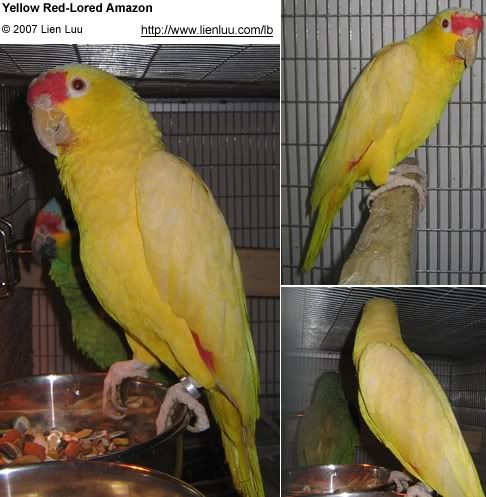
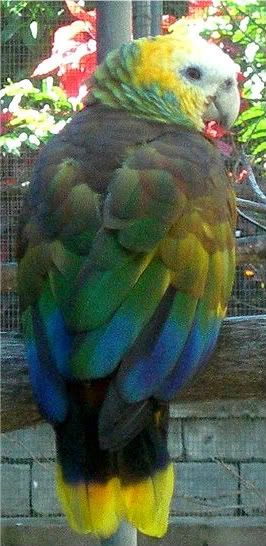
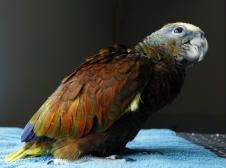
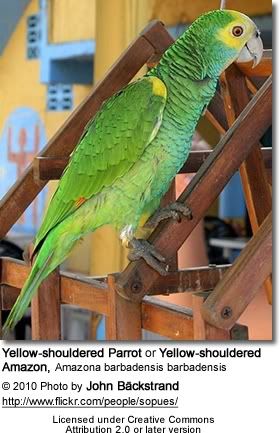
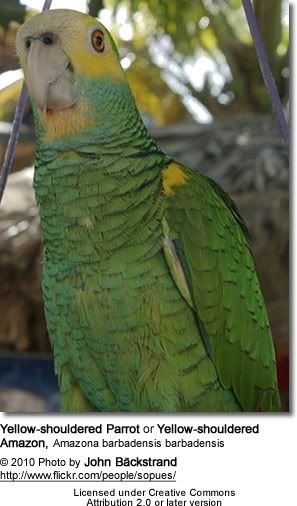

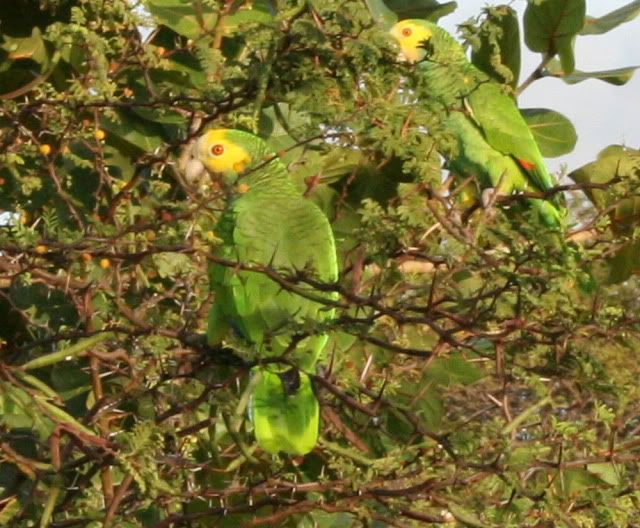
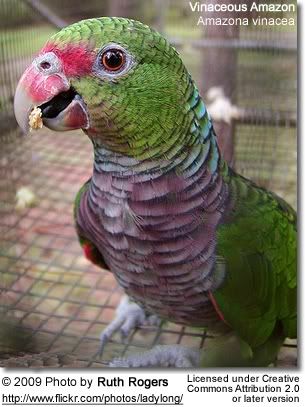
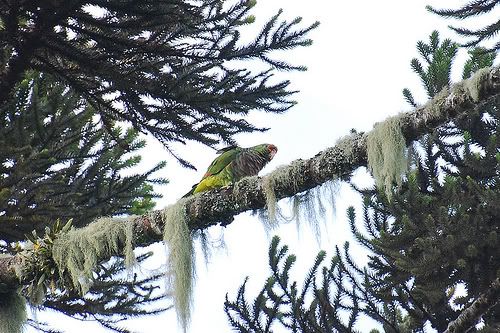
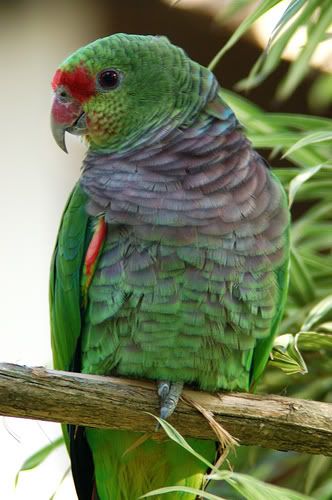
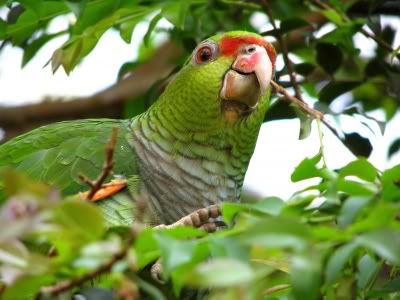
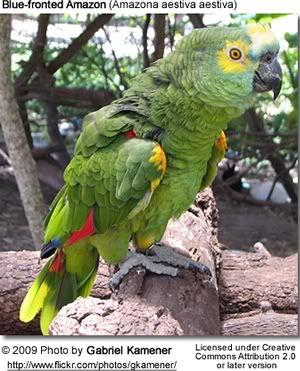
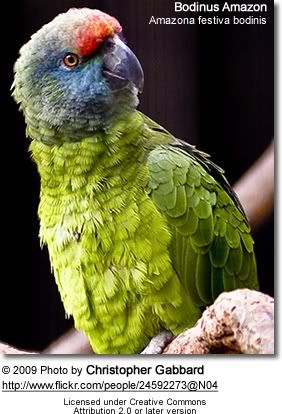





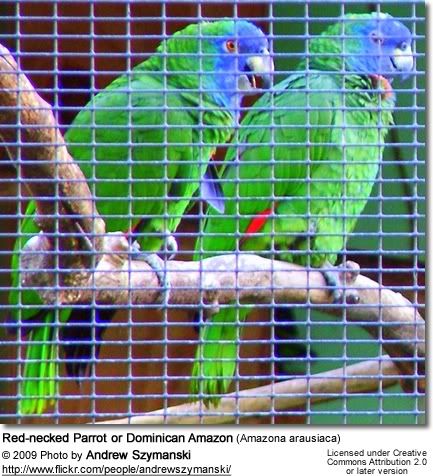
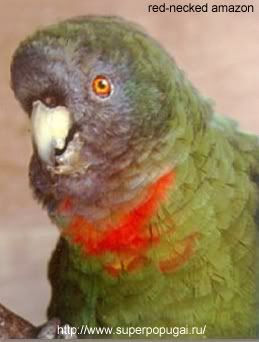
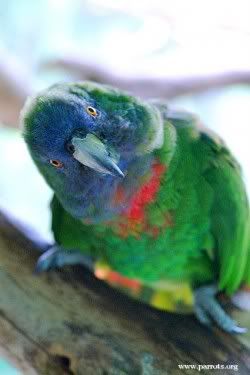
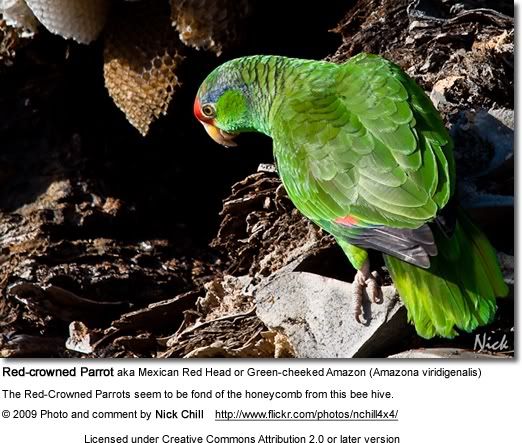
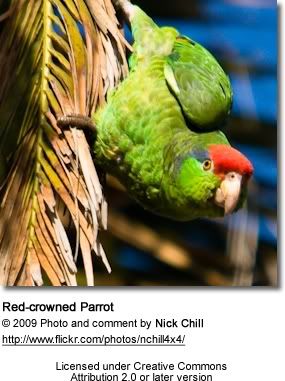
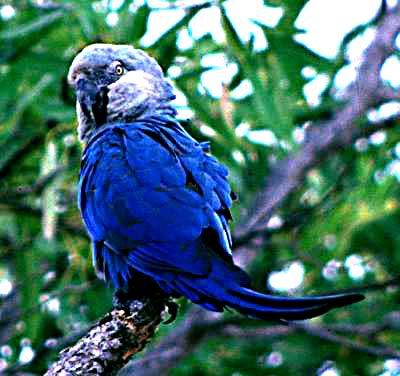
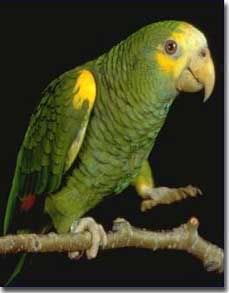


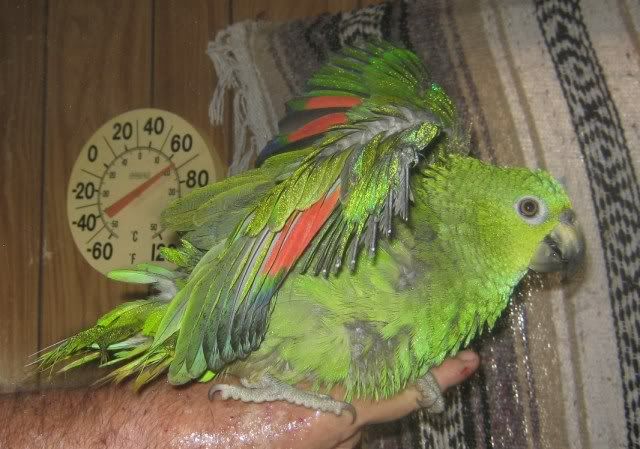
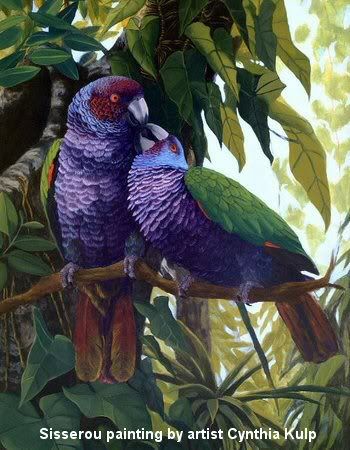
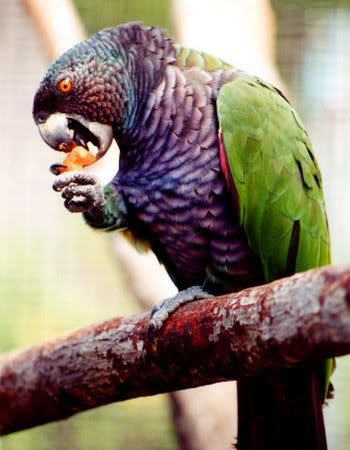
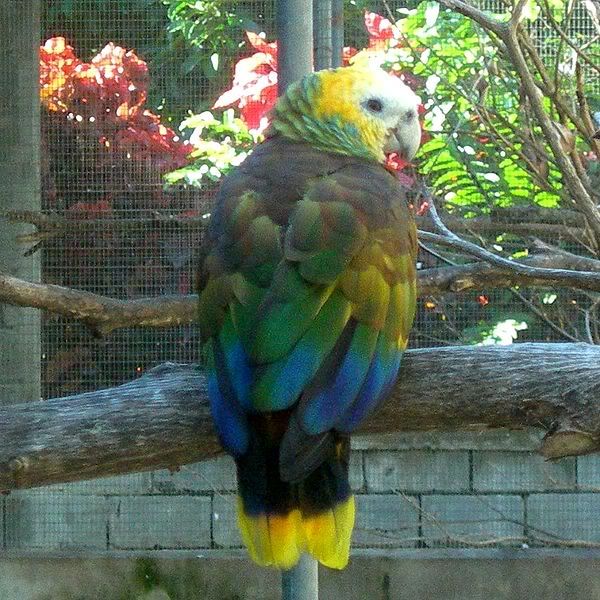

How's your "Alkaline water" doing, Talon?
in Health Room
Posted · Edited by Jayd
Added "for me" and "HOT"
We've used Bragg's Organic vinegar for what seems like years....Maggie will make up an 8 ounce cup for me of HOT water and add two tablespoons of Bragg's and one tablespoon of honey to taste. She will pour some of that off for Joey, Salsa, and all of our birds in the past daily. They would drink a teaspoon to tablespoon each and go out of their way for it. Maggie also rinses all their fresh veggies, cups, bowls, hard toys, and cages with vinegar and lets air dry. So, in essence, our FIDS have received a lot of vinegar and in all these years, we've never had a problem. :cool:
Maggie also rinses all their fresh veggies, cups, bowls, hard toys, and cages with vinegar and lets air dry. So, in essence, our FIDS have received a lot of vinegar and in all these years, we've never had a problem. :cool: